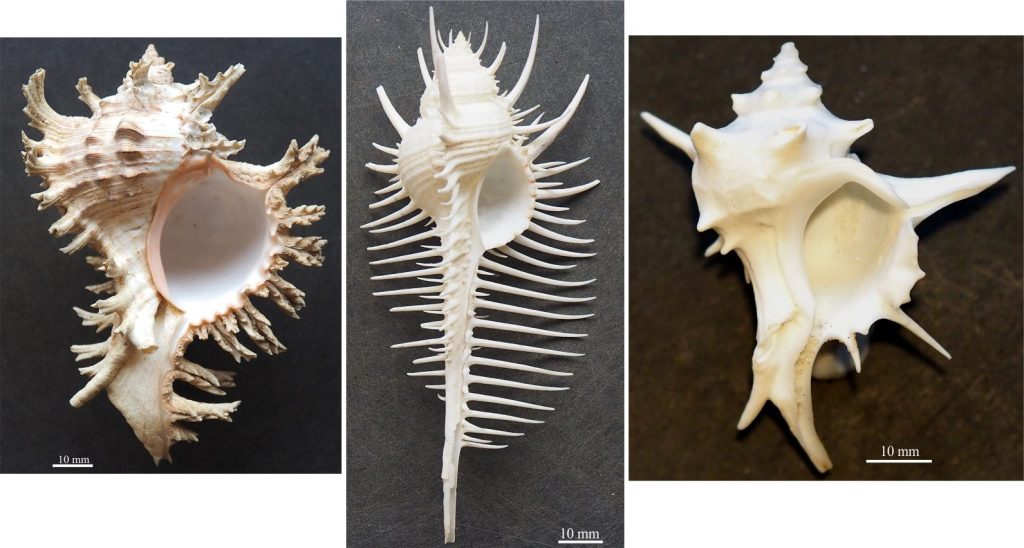
Some basic gastropod morphology to assist sedimentological interpretations
This is a companion post to bivalve shell morphology.
The world of snails is morphologically and taxonomically more diverse than that of bivalves. It has been estimated that globally the number of known living gastropod species is about 60,000 compared with about 20,000 bivalve species. In modern and fossil species, morphological variation is manifested by an astounding array of shell size, shape, and ornamentation – the latter exemplified by the sartorial splendour of spiny Murex.
Apart from the obvious morphological differences between bivalves and gastropods, there is also a methodological difference in their taxonomic subdivision. Identification of bivalve taxa is based on a combination of animal anatomy and shell morphology; for the latter, valve dentition is important. In comparison, modern gastropod taxa are based almost entirely on animal anatomy, except at the genus level where shell structure may be included. However, in both cases the identification of fossil forms depends primarily on a comparison of physical attributes with their modern descendants.
The majority of species are marine, but there are fresh water and air-breathing terrestrial species (pulmonates). The morphological attributes of these shells are similar to their marine cousins. There are also shell-less gastropods (nudibranchs) such as the common slug, but these have almost zero preservation potential.
In outcrop and core, gastropods will occur in various states of completeness, as small fragments to complete specimens; their preservation will depend on the kind of gastropod (e.g., thin shelled or thick, tall spires or planispiral, ornamented), the depositional environment, and the degree of sediment reworking (e.g., high or low, wave or tidal current energy). They will probably occur with other shelly fossils and may be accompanied by encrusting biotas such as bryozoa, corals, calcareous algae, and barnacles. There will probably be an associated trace fossil assemblage.
At a certain level of preservation, gastropod fragments will likely be indistinguishable from other molluscs, brachiopods, or barnacles (thin section examination may provide some relief from this dilemma).
However, there are many distinctive morphological elements that will provide a reasonable level of confidence if correctly identified. Some of the commonly used attributes are described here.
Other sources
There are lots… but here are a couple of links to recent texts.
The Paleontological Society provides free access to its Digital Atlas of Ancient Life that contains oodles of explanatory texts, field guides, Apps, and images on the fossil record.
Bringing Fossils to Life: An Introduction to Paleobiology, Donald Prothero. Now in its 3rd Edition.
Orientation
The standard orientation is to place the aperture at the bottom facing the observer, and the spire pointing upward. The aperture may open on the right side of a central column (the columella) indicating dextral coiling; opening on the left side indicates sinistral coiling. Most gastropods have dextral coiling.
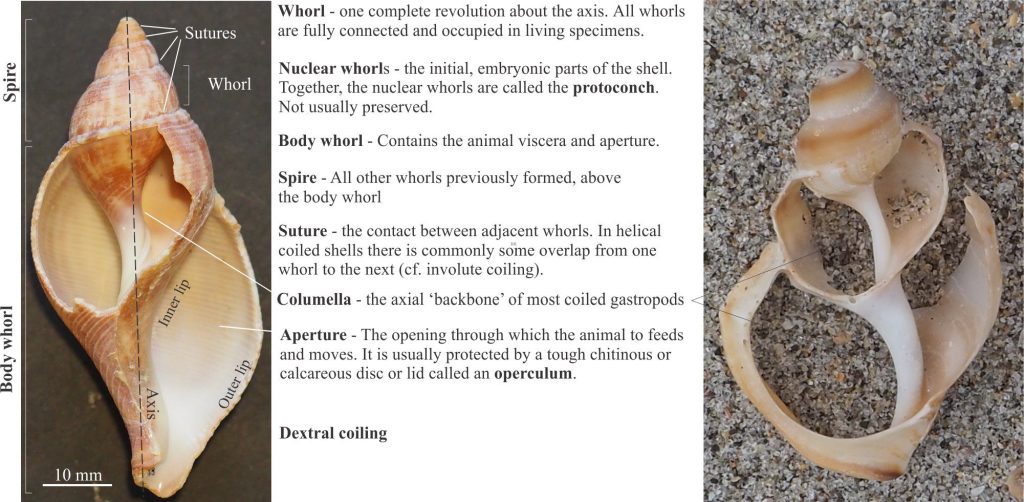
Coiling: Nearly all gastropods produce coiled shells. The variety in gastropod size and shape is primarily a function of the style of coiling. The most familiar shape consists of a body whorl (the open end) and a spire above, coiled in a cork-screw fashion – this is helical coiling. The angle between the body whorl and top of the spire defines the overall shape of the shell; very steep angles present turret shapes and tall spires (e.g., Maoricolpus), and at the other extreme very low angles produce discoidal forms (e.g., Umbonium (Zethalia)). Coiling in a single plane produces planispiral forms which also have bilateral symmetry (like many ammonites). In some species there may be no spire at all, such that the body whorl completely envelops the earlier whorls (involute forms, e.g., Bulla), or non-coiled forms such as the common limpet (e.g., Cellana).
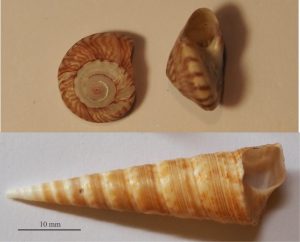
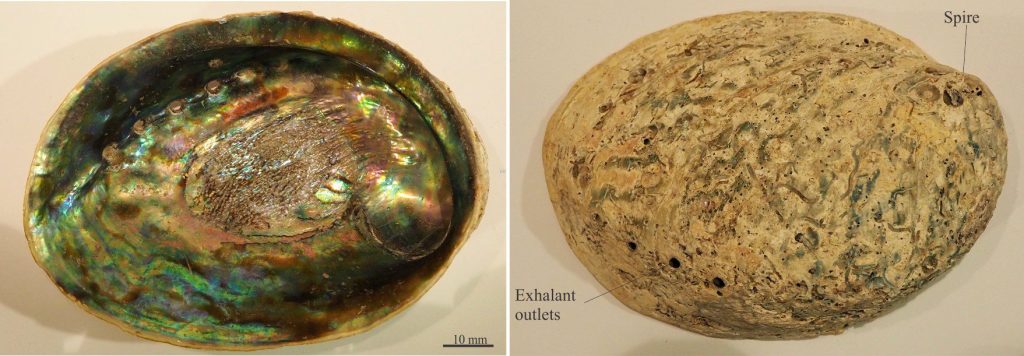
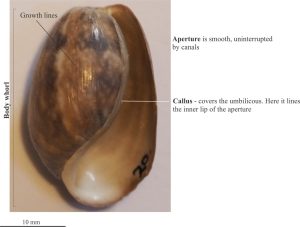
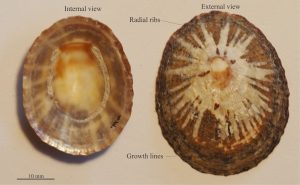
Other morphological elements
The primary morphological elements such as body whorl, spire, and aperture are described above. Additional attributes are shown here for four different species.
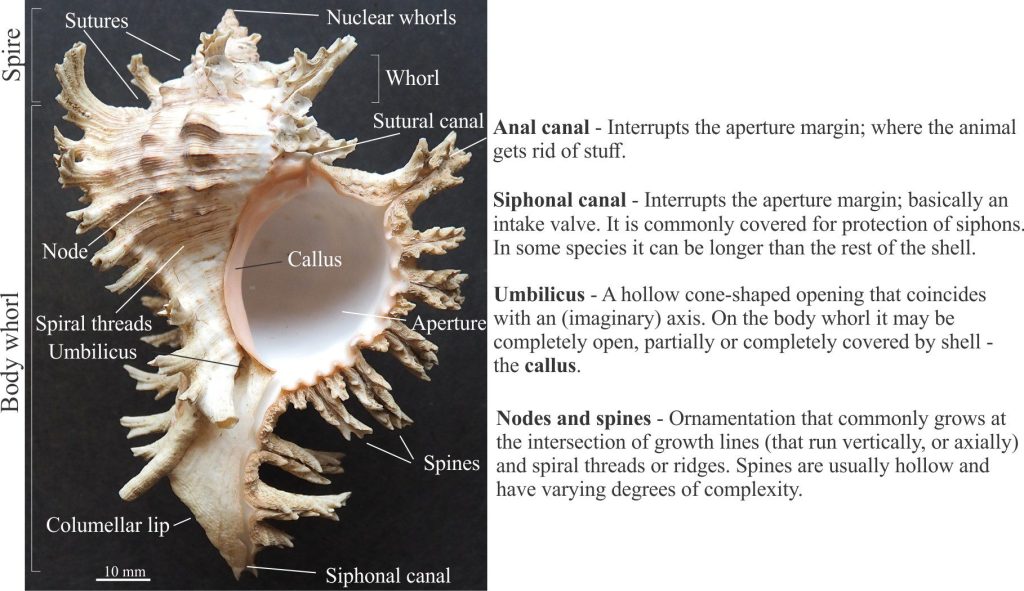
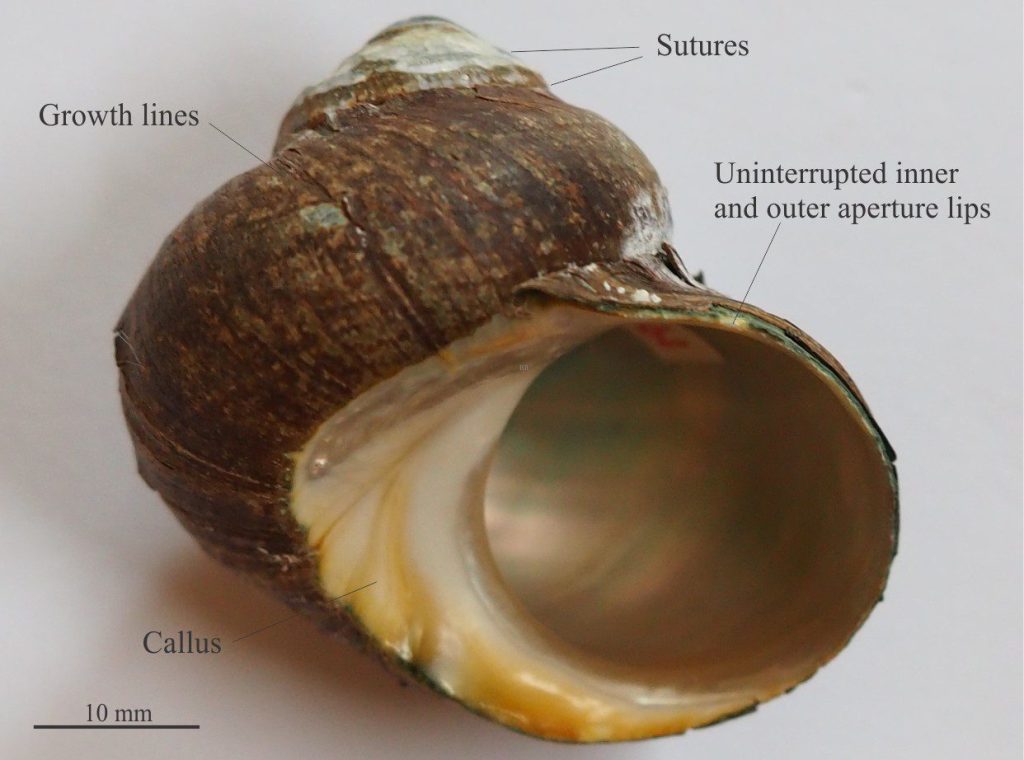
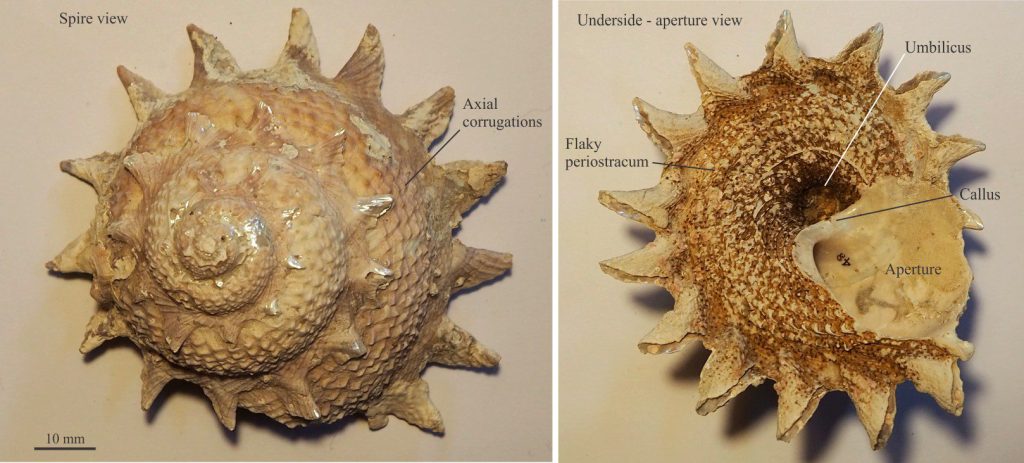
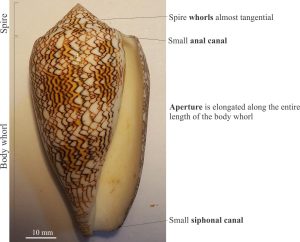
Other posts in this series
Echinoderm morphology for sedimentologists
Trilobite morphology for sedimentologists
Brachiopod morphology for sedimentologists
Cephalopod morphology for sedimentologists
Bivalve shell morphology for sedimentologists
Carbonates in thin section: Molluscan bioclasts
Mineralogy of carbonates; skeletal grains
Mineralogy of carbonates; non-skeletal grains
Mineralogy of carbonates; lime mud
Mineralogy of carbonates; classification
Mineralogy of carbonates; carbonate factories
Mineralogy of carbonates; basic geochemistry
Mineralogy of carbonates; cements
Mineralogy of carbonates; sea floor diagenesis
Mineralogy of carbonates; Beachrock
Mineralogy of carbonates; deep sea diagenesis
Mineralogy of carbonates; meteoric hydrogeology
Mineralogy of carbonates; Karst
Mineralogy of carbonates; Burial diagenesis
Mineralogy of carbonates; Neomorphism

















